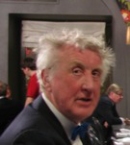|
Plenary
Lecture
Theory and Practice in Landscape Architecture; The Role
of Research

Professor Martin van den Toorn
Faculty of Architecture
Delft University of Technology
HOLLAND
E-mail:
m.w.m.vandentoorn@tudelft.nl
Abstract: Landscape architecture is first of all
about the making of gardens, parks and landscapes. This
sequence of plan types also refers by and large to the
historical development of the discipline. From the end
of the 19th century on, for the first time in history,
the landscape as such became object of planning and
design; the design of the landscape as public space.
Landscape architects got more and more involved into the
planning and design of rural, urban and infralandscapes
in the long run.
A second development in the 20th century is the gradual
transition from profession to discipline. In this
transition, research plays a key role. Landscape
architecture as a design discipline is still largely
practice driven, not like science that is mainly theory
driven. In the second part of the 20th century, research
was introduced that also resulted in a start of theory
development at a limited scale. With the emergence of
theory, research became more important and started
slowly to play a role in the development of the
discipline at large.
We have distinguished three types of research; design as
research, research in design and research of design. In
our view, research in landscape architecture has
different functions and roles; from a role in practice
to theory development. The 4th IASME/WSEAS Conference on
LANDSCAPE ARCHITECTURE — 2011 Angers, FRANCE methodology
is largely based on 'case-study research'.
The conclusion is that research plays a role in
different aspects of the discipline. First of all in
practice; precedent analysis, research on evidence and
postoccupancy evaluation (POE) will become more and more
integrated into the daily design process. Secondly
research is needed in theory development and critique.
Both can have a major influence on the development of
the discipline as a whole, it will eventually lead to a
development towards knowledge-based design.
Brief Biography of the Speaker:
Martin van den
Toorn is a landscape architect who was educated at
Wageningen University and the College of Environmental
Design at the University of California at Berkeley where
he did his Master's in Landscape architecture. After
finishing his studies he worked for almost 15 years at
various research institutes (De Dorschkamp, Staring
Centre, Alterra) of Wageningen University on research
projects dealing with the role of landscape architecture
in landscape development at the long run.
In the beginning of the 90-ies he took up a teaching
position at the Dept. of Landscape architecture at
Wageningen University. He taught design studio's in the
regular program and the International Course Landscape
Architecture that was especially meant for foreign
students. At the start of the millennium, the European
Bachelor's / Master's system was introduced in Delft and
he was asked to join the Faculty of Architecture in
Delft to assist in setting up an international program
and research in landscape architecture. From 2006 on he
teaches a series of seminars on the relation between
theory and practice in landscape architecture in the
Master's program at the National School of Landscape
architecture (ENSP) at Versailles.
His research interest is first of all on theory and
theory development in landscape architecture and the
role of research. A second focus is on visualisation,
drawing and representation in landscape architecture and
urban design. In the academic year 2009-2010 he spent
his sabbatical year for the first part in Europe (ENSP,
Versailles) and the second part in the US (UC Berkeley,
Dept. of Landscape architecture) working on his own
research and lecturing and travelling through the
Western US and Canada (Montreal).
|
